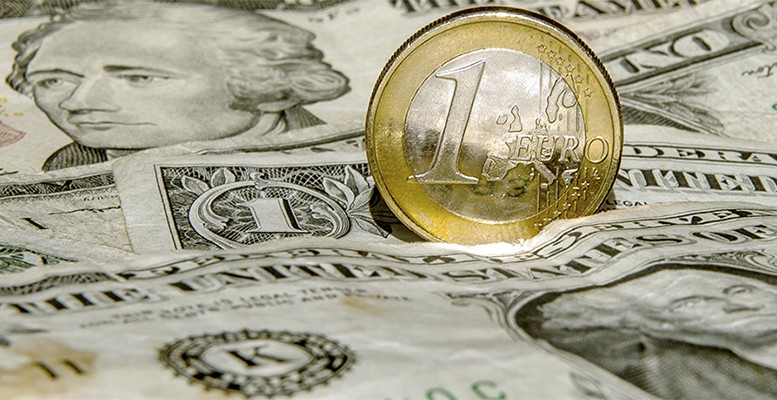James Alexander via Historinhas | What is more important the short, medium or long term? The recent gyrations of the EUR/USD exchange rate have grabbed a lot of attention since the start of the year. In theory the strong easing bias of the ECB versus the confusing position of the Fed should mean the EUR weakens versus the USD. Or should it? That currency story based on the stance of the respective central banks is surely “in the price” already.
The new information that could shift the EUR/USD is more debate about what more the ECB thinks it can do within its mandate of inflation ceiling mandate of “close to, but below 2%”. The Fed has been tightening for many months, first passively and then actively. The debate is now, what will it do next?
Actually, we now have more uncertainty about the relative stance of monetary policy in the two biggest (freely-floating) currency blocs than for a long while.
Over the last four months it looks as if there has been a major strengthening of the EUR vs the USD judged by the short term currency chart. The sharpest movement within this time frame was the dramatic reaction to William Dudley’s dovish speech on February 2nd in the midst of the market’s first quarter swoon. It was the first major recognition by the Fed that perhaps things had changed since the December rate hike.
We commented on it at the time as a remarkable ride to the rescue by the market’s chief representative on the FOMC. The NY Federal Reserve was thus doing its time-honoured job of forcefully presenting the actual state of things to the often out-of-touch board staff and regional governors. It absolutely goosed the FX markets, and with other follow-ups over the next two weeks turned around what was fast becoming a nasty situation in the markets.
On February 11-12, a couple of things happened. There was Jamie Dimon’s massive confidence-boosting purchase of his bank, JP Morgan’s, shares; there was the apparently panic-driven calls from Yellen to the heads of the Bank of England and the ECB. And just 5 days later, the icing on the cake when the swing voter on the FOMC, Bullard, swung.
The subsequent strengthening of the USD versus the EUR, as the wider markets also recovered, has now been offset by a weakening again. Draghi has done his best to show the ECB is still very much in easing mode, via increasing the size, scope and duration of its QE programme. Rates have gone even more negative. But still the markets want more and were disappointed by some comments during the March press conference that maybe rates could not go more negative.
Draghi’s problem remains that the ECB’s mandated inflation ceiling adds such a heavy tightening bias onto the easing bias of the practical measures. The German lobby on the ECB is also known to be powerful, so the dynamic of the ECB Council is very different to that of the FOMC where the Chair is far more powerful and there are little or no regional or political influences. Sometimes Market Monetarists wish there were more political influences on the Fed, especially when they go all obsessive about microscopic inflation or on “normalization” wanderings and simply ignore the overriding goal to support prosperity.
The medium term
A lot of the last four months in the life of the USD, especially versus the EUR, has been mere noise. The currency move from late 2014 and during the first half of 2015 when the Fed began to seriously contemplate tightening is still the standout feature. The EUR weakened substantially during this period and it has not reversed. The Fed was determined to tighten and the ECB to loosen. By mid-2015 these new biases were very much in the price of the EUR/USD.
Nothing much has changed since mid-2015, although both central banks have had to work hard at keeping markets convinced that they mean business: the Fed by actually tightening and raising rates, the ECB by increasing QE and moving to negative rates.
The Fed’s tightening bias, seen by various regional governors immediately starting up the tightening talk anytime the markets stabilise, means the USD will likely strengthen again. The strength won’t last as US NGDP growth is too weak to take the tightening. Some Market Monetarists like Scott Sumner and David Beckworth might charitably call this sort of thing an improved Fed reaction function. It looks more like ignorance flavoured with panic to me. Whatever. The result will most likely be sideways drift.
And on the other side, the ECB looks boxed in by its complete inability to focus on nominal growth over inflation. It´s often repeated fixation on the ceiling is just horribly counterproductive. Until it sees the problem, or until some sort of economic slowdown hits Germany, things seem unlikely to improve very much. The result will be drift in the Euro Area too.





